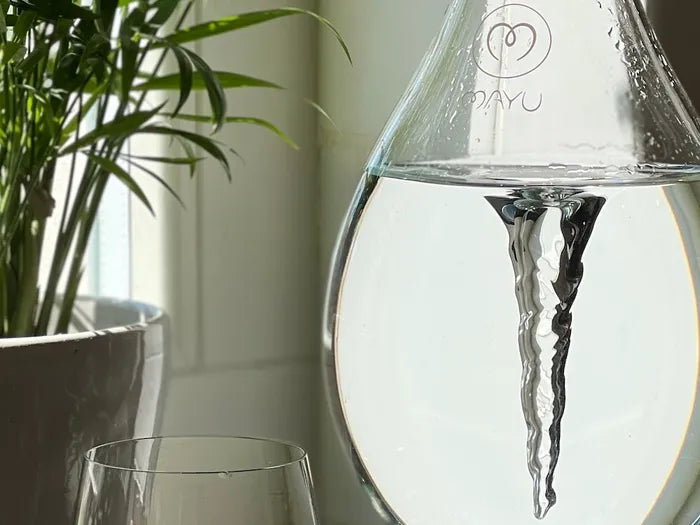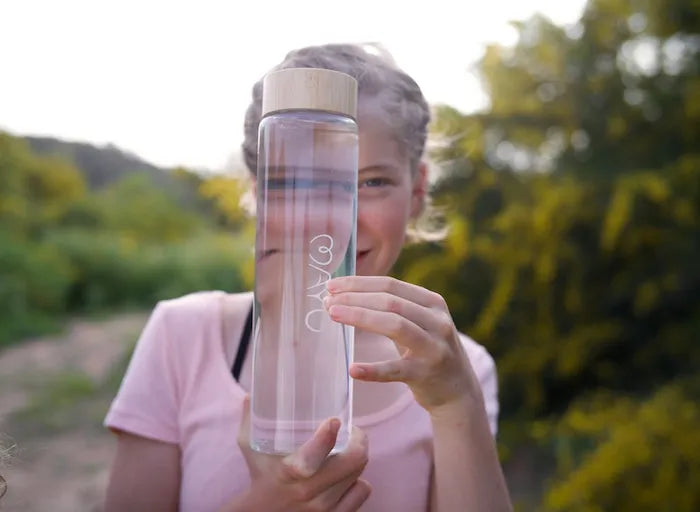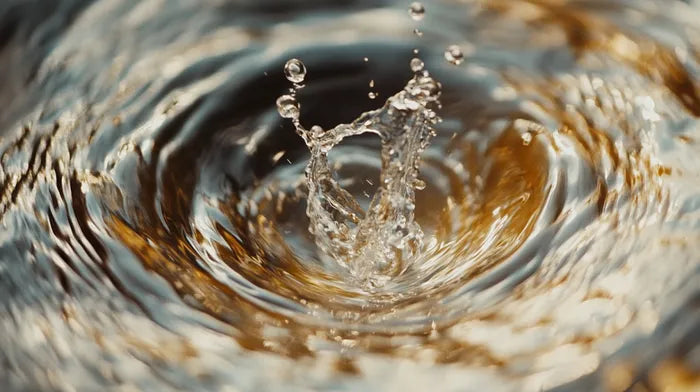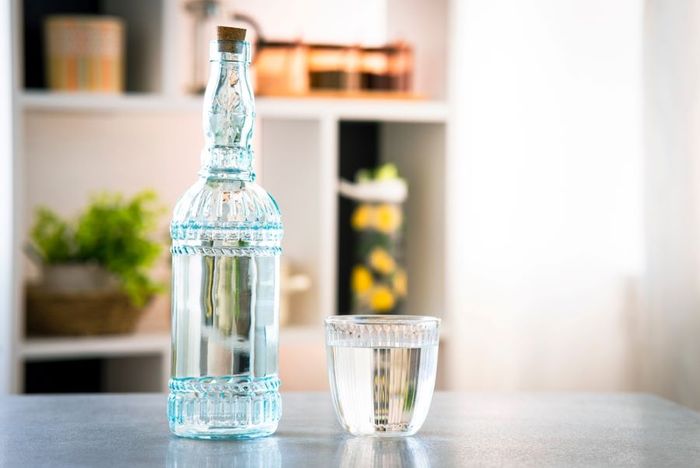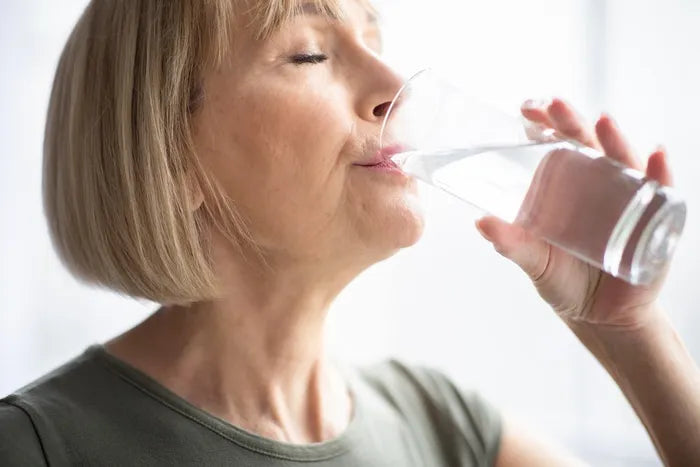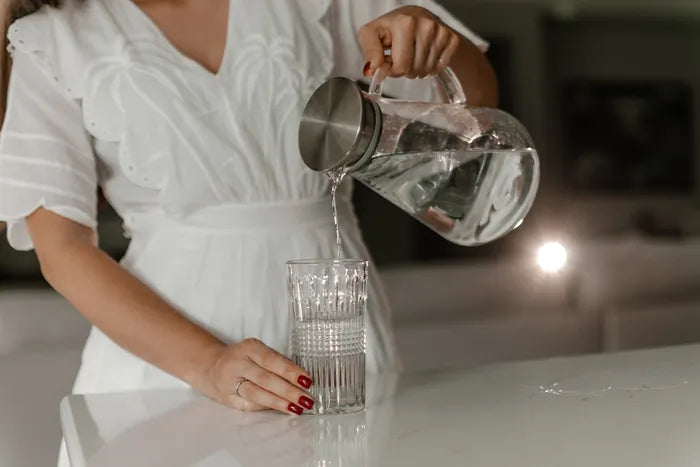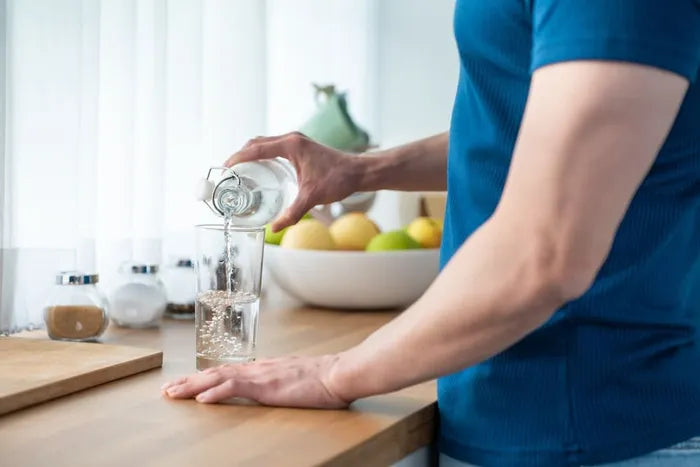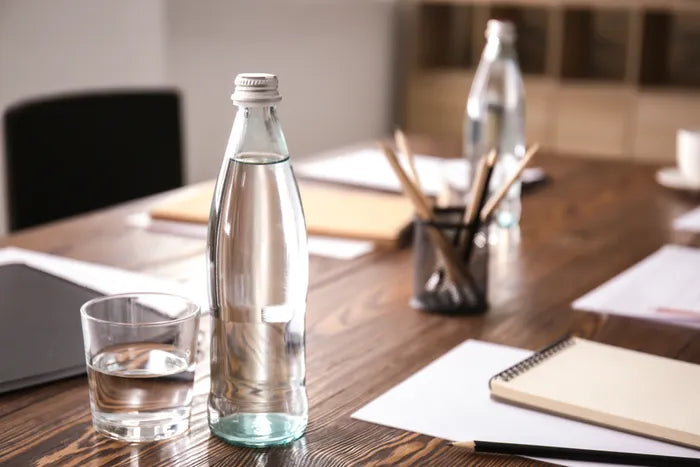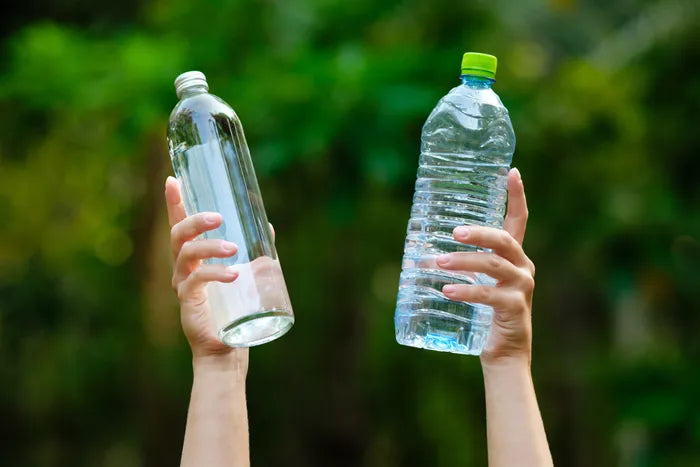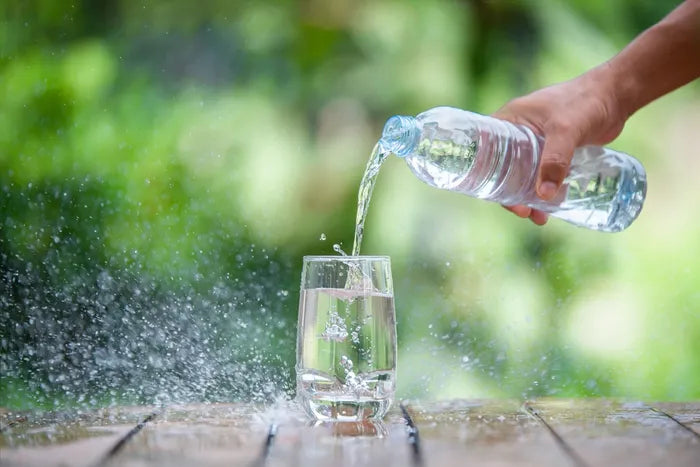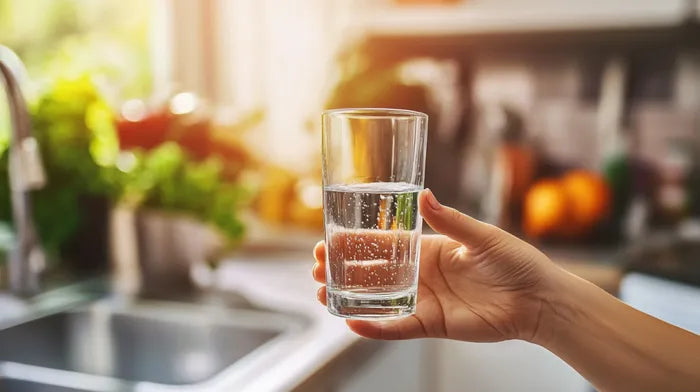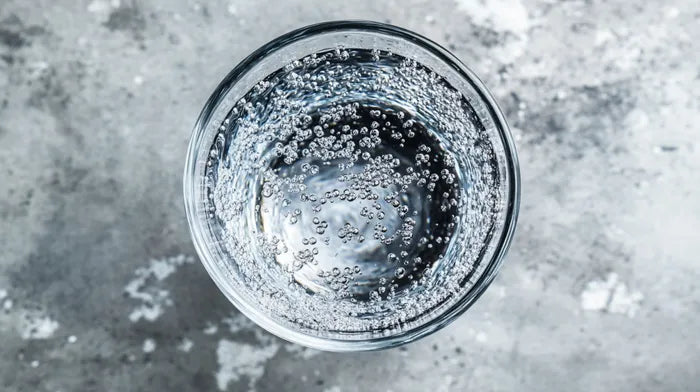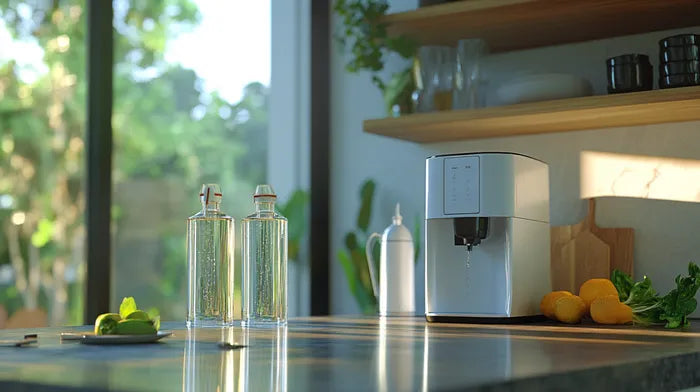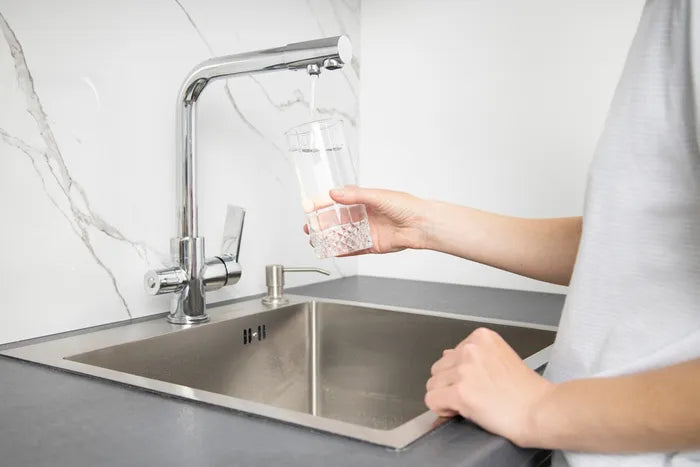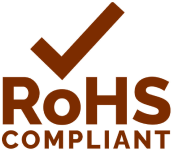How to Use & Read a TDS Meter: Master Water Quality
Want to ensure the water you drink is pure and healthy? A TDS meter is the key to unlocking the secrets of your water quality.
Updated December 13, 2024

Are you concerned about the purity of your drinking water? Do you want to ensure that the water you consume is free from harmful contaminants? A Total Dissolved Solids (TDS) meter can help.
But learning how to use it can feel overwhelming, with so many options and technical jargon. That's why we're here to simplify the process and empower you to make informed decisions about your water health.
Below, we'll unravel the mysteries of TDS meters, teaching you how to use them effectively and interpret the results. You'll learn about the factors that influence TDS readings and the importance of calibration.
» Make natural spring water at home in 3 steps
What Is a TDS Meter?
A TDS meter measures the amount of dissolved substances in water. It does this by testing how well the water conducts electricity. TDS meters are used to check drinking water quality, monitor water for industrial use, and assess water conditions for aquaculture.
High TDS levels can make water taste bad. Certain industries require specific water quality standards. Aquatic life thrives in water with specific TDS levels. If a TDS meter shows high readings, it may indicate that the water needs to be filtered or softened.
As seen in Figure 1 above, several key components of the TDS are labelled. Here’s a description of each component and its function:
- Electrode/Probe: The electrode measures how well electricity can pass through the water. It does this by using metal sensors to detect the movement of tiny charged particles called ions. The more ions in the water, the better the electricity flows, and the higher the reading on the meter.
- Temperature Sensor: The temperature sensor is located near the electrode. It measures the water temperature and adjusts the conductivity reading to account for changes caused by temperature. This ensures accurate TDS measurements, which are often standardized to a temperature of 25°C.
- Display Screen: The digital screen shows the TDS level in parts per million (ppm). It can also show the water temperature.
- Mode/Calibration Button: This button lets you switch between measuring TDS, conductivity, and temperature. You can also use it to calibrate the meter with special solutions to get accurate readings.
- Power Button: This button turns the meter on and off, conserving battery life.
- Battery Compartment: Powers the TDS meter, usually with small replaceable batteries.
» Ready to ditch acidic water? Naturally increase your water's pH
How the Parts Work Together:
When you submerge the probe in water, ions in the solution conduct electricity between the metal sensors. The temperature sensor accounts for temperature variations to ensure accuracy.
The device converts the conductivity reading into a TDS value using a predefined conversion factor. The screen then displays this result, offering a quick estimate of the dissolved solids in the water.
TDS devices measure the concentration of dissolved substances in water, expressed in ppm, indicating the overall solute load. While pH meters measure water's acidity or alkalinity, reflecting hydrogen ion concentration on a scale of 0-14.
Conductivity measures water's ability to conduct electricity, influenced by the presence of ions, and is expressed in microsiemens per centimeter (µS/cm). While TDS derives from conductivity, it quantifies dissolved solids, whereas conductivity measures ionic activity.
Each parameter, along with its corresponding measurement device, offers unique insights into water quality for different purposes.
» Learn to make structured water at home for optimal health
What Are Safe TDS Levels?
Recommended TDS levels have been established to guide you on what is considered safe. The generally accepted values and standards are as follows:
1. Tap Water
The EPA recommends keeping drinking water TDS below 500 ppm for safety. While 300-500 ppm is generally okay, lower levels often taste better [1–2,5]. High TDS levels, above 500 ppm, can signal potential contaminants like heavy metals or excessive minerals, which could harm your health.
2. Bottled Water
Bottled water usually has a TDS level between 10 and 300 ppm. Spring water often has a TDS level between 100 and 300 ppm, while purified bottled water usually has less than 50 ppm. The FDA sets a maximum TDS level of 500 ppm for bottled water to keep it safe and consistent.
3. Reverse Osmosis (RO) Water
RO water goes through a filtration process that significantly reduces its TDS level, usually to between 5 and 50 ppm. Ideally, RO water should have a TDS level of around 20-30 ppm, which removes contaminants while keeping some essential minerals. A TDS level below 50 ppm shows that the filtration process is working well.
The MAYU Full Cycle System solves a common problem with reverse osmosis (RO) water: it often has a very low level of dissolved solids (TDS), usually between 5 and 50 parts per million (ppm).
Unlike many other water purification systems that just remove impurities, the MAYU Full Cycle goes a step further by adding minerals to your water right when you need it. This makes it different from other products that can leave your water lacking essential nutrients. With this system, you can be sure your drinking water is both clean and healthy.
How to Use a TDS Meter
1. Preparation
- Remove the protective cap.
- Calibrate the meter, if necessary.
- Collect a clean water sample in a glass or beaker.
2. Measurement
- Immerse the probe up to the designated line in the water sample.
- Gently stir to remove air bubbles.
- Wait 10-15 seconds (or longer in extreme temperatures) for a stable reading.
- Note the ppm value on the display.
3. Cleaning and Storage
- Rinse the probe with deionized or filtered water.
- Replace the protective cap.
Avoid the following common Mistakes:
Not calibrating the meter.
Inserting the probe too deep.
Not removing air bubbles thus affecting the reading.
» Learn what to do if you drank contaminated water
Factors Affecting TDS Meter Accuracy
While TDS monitors are reliable for testing dissolved solute concentrations, several factors can affect their readings:
1. Temperature
Temperature can affect TDS meter readings. Warmer water makes ions move faster, which can trick a meter without automatic temperature compensation (ATC) into showing a higher TDS level.
older water, on the other hand, can make the meter underestimate the TDS level. Meters with ATC adjust readings based on water temperature to get accurate results.
» Explore the best types of water to keep your kidneys functioning well
2. Calibration
If a TDS meter isn't calibrated correctly, it can give you wrong readings. To get accurate measurements, you need to regularly adjust it with a standard solution. This aligns its sensor with known values. Skipping calibration can lead to mistakes, especially when you need very precise measurements.
3. Impurities on Probes
If there's dirt or biofilm on the TDS meter probe, it can mess up the conductivity measurements. This can make the readings higher or lower than they should be. To get accurate and consistent results, it's important to keep the probe clean and well-maintained.
4. Water Composition
Different ions in water, like sodium and calcium, affect conductivity differently. TDS meters estimate total dissolved solids based on conductivity measurements, so the type of ions can slightly affect the reading. To get a precise analysis, you can use other testing methods—like pH meters—along with a TDS.
» Learn when and how to reuse your water filter
Ensuring Accurate TDS Meter Readings
To ensure that your TDS meter is maintained well and will provide consistent accurate readings, the following tips are suggested:
1. Regular Calibration
Calibrate your TDS meter monthly or when accuracy is important using a standard calibration solution (like 342 ppm NaCl) at room temperature. Follow the meter's instructions to adjust the reading. Regular calibration helps keep the meter accurate over time.
You should calibrate your TDS meter once a month or after 10-15 uses, depending on how often you use it and what for. To calibrate, you need to adjust the meter's readings to match a known standard solution. Here's how:
- Select a Calibration Solution: Use a standard solution with a known TDS reading, usually 342 ppm (sodium chloride) at room temperature (25°C). These calibration solutions often come with the device or can be bought separately.
- Immerse the Probe: Submerge the probe in the calibration solution up to the marked line, making sure there are no air bubbles. Once the reading is stable, use the calibration button or screw on the meter to adjust the display to match the known ppm value of the solution.
- Rinse and Verify: After calibrating, rinse the probe with distilled water and check the accuracy by testing the calibration solution again. A good way to do this is to repeat the reading 3-5 times and make sure the results are similar or close to each other. If you get very different readings or if they are far from the known value, there might be a problem with the device.
» Ditch the jitters with powerful, caffeine-free energy boosters
2. Proper Cleaning and Storage
After each use, rinse the probe with distilled water or even ethanol (especially when measuring liquids like beverages or substances with high TDS levels) to prevent residue buildup.
Store the meter with its protective cap on to keep it clean and protect the sensor. Don't submerge the device past the marked level to avoid damaging the internal electronics.
3. Battery Health Inspection
Make sure the batteries are working properly, as low power can affect the accuracy of the readings. If the display is dim or the readings are fluctuating, replace the batteries. A good power supply is essential for consistent performance and reliable results from your TDS meter.
A Note On Reading Interpretation and Device Specifications
It's important to understand how TDS meters work and what they can and can't do. When buying a TDS meter, make sure it's right for your needs and that you know its specifications. Knowing a bit about how the meter works will help you avoid misinterpreting the readings.
When looking at the readings, pay attention to two things:
- Accuracy: This shows how close the meter's reading is to the actual TDS value. A good meter will be accurate within ± 2%.
- Resolution: This is the smallest change the meter can detect. High-precision meters can often detect changes as small as 1 ppm or even 0.1 ppm.
» Don’t waste a drop! Discover how long your filtered water stays fresh
TDS Meter Limitations
Although useful, TDS devices do have certain limitations which include:
Identifying Specific Contaminants
TDS meters mainly detect ionic compounds by measuring conductivity. This means they can't detect organic pollutants like pesticides or bacteria. To identify these, you need to use water quality test kits or microbial assays.
The main problem with using TDS meters to judge water purity is that they can't tell the difference between safe and harmful substances. They measure the total amount of dissolved solids but can't distinguish between harmful things like lead and harmless minerals like calcium. To find out about specific substances, you should use lab tests or tests for heavy metals and toxins.
Temperature Variations
As we've learned, TDS readings can change with water temperature, especially if the meter doesn't have automatic temperature compensation (ATC). For accurate readings, it's best to use a meter with ATC or measure the water at 25°C.
Poor indication of Water Safety
Low or high TDS doesn't always mean the water is safe or unsafe. Mineral water can have high TDS and still be safe, while water with low TDS can still be unsafe. To get a complete picture of water quality, it's best to combine TDS testing with pH, conductivity, and specific contaminant tests.
» Boost your RO water! Learn to make it alkaline and enjoy the benefits
Scenarios Where TDS Meters Might Be Misleading
Besides the limitations we've already discussed, certain water conditions can also affect the accuracy of TDS readings.
Non-ionic pollutants
If you're testing water that's polluted with organic chemicals, oils, or bacteria, you might get normal TDS readings. This is because TDS meters can't detect non-ionic substances, so the results might be misleadingly safe.
To get a complete picture of water quality in these cases, you should use microbial or chemical tests.
Mineral-Rich Water
High TDS readings are common in hard water, which often contains minerals like calcium and magnesium. While this is generally safe, high readings might seem concerning.
But, they don't always mean the water is contaminated. If you have high TDS readings, consider testing for specific harmful substances before deciding on any water treatment.
Filtered Water with Undetectable Contaminants
Water from filtration systems might have low TDS levels, but it could still contain harmful things like lead, arsenic, or pesticides. TDS meters can't detect these non-ionic substances.
If you're concerned about water quality, especially if it looks or smells strange, use specific tests or send a sample to a lab.
Desalinated or Reverse Osmosis (RO) Water
RO water often has a very low TDS level, but it might not have all the essential minerals that are good for your health. People might think that low TDS means the water is "pure," but that's not always the case. To make sure your water is healthy and tastes good, you can test it for pH levels and mineral content.
» Find the best water types to supercharge your cellular hydration
Taking Control of Your Water Quality
By understanding the basics of TDS meters and following the tips in this guide, you can take control of your water quality. Remember, a well-calibrated TDS meter is a valuable tool, but it's not the sole determinant of water purity. Consider combining it with other water quality tests or consulting with a water quality expert for a detailed assessment.
To further enhance your water quality, consider using the MAYU Full Cycle. This system treat your water in 3 steps by filtering the water using reverse osmosis, remineralizing it, and aerating it to mimic natural spring water.
Disclaimer: The information published by MAYU Water is not a substitute for the expert knowledge, advice, and recommendations of trained professionals. We strongly recommend consulting with industry experts and primary or scientific sources before making any health, research-related, or other important decisions.












